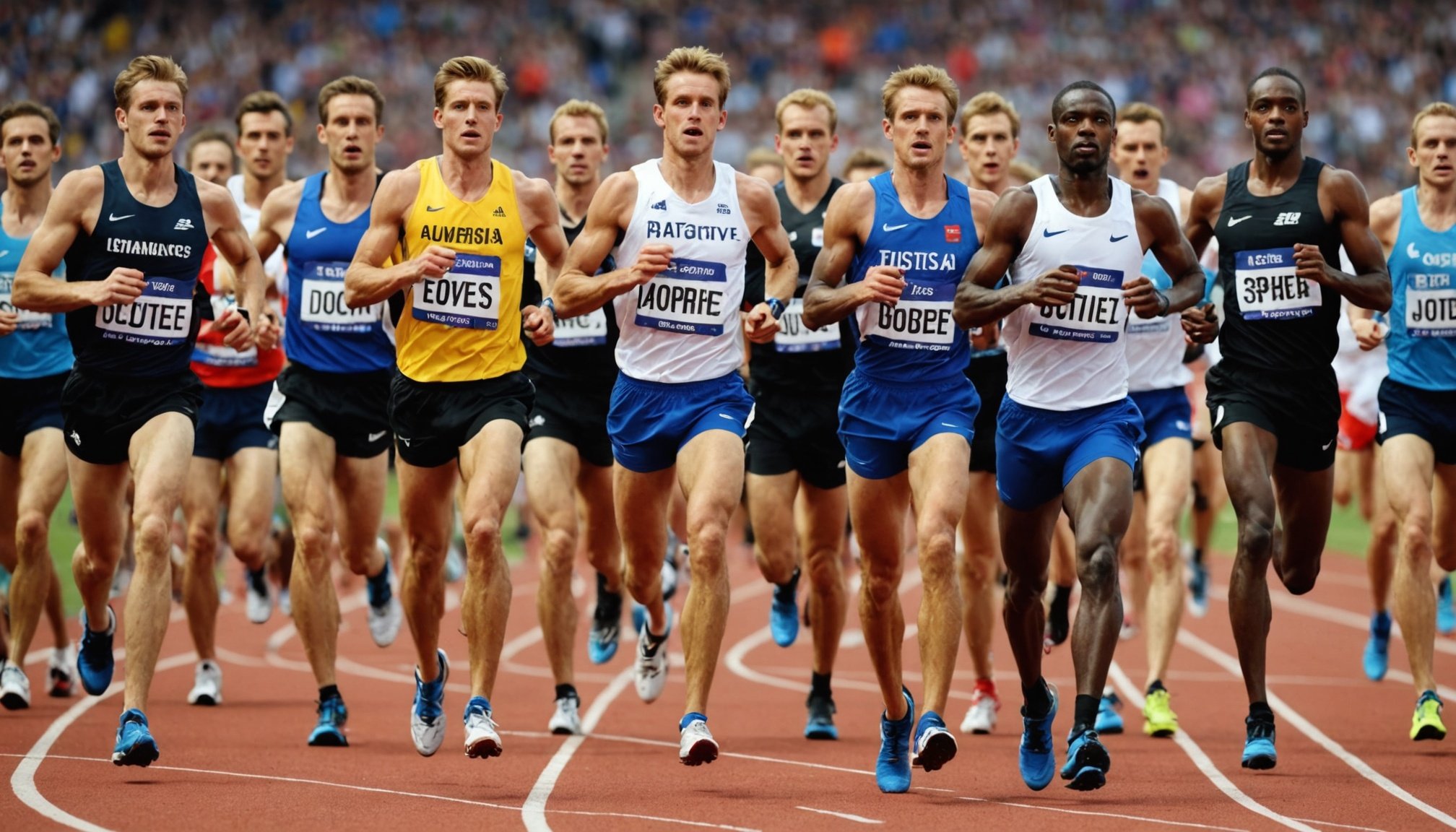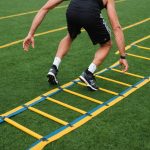Doping undermines the integrity of UK athletics, posing challenges for athletes and officials alike. Identifying and preventing doping requires a multifaceted approach, combining advanced technology, education, and stringent regulations. This discussion explores effective strategies that can enhance detection efforts while fostering a culture of clean sport. By examining current practices and innovative solutions, we can work toward a future where fair competition prevails, ensuring athletes’ hard work is rightfully recognized without the shadow of performance-enhancing drugs.
Overview of Doping in UK Athletics
Understanding the scope of doping in athletics is crucial for addressing its impact on sports integrity. Doping refers to the use of prohibited substances or methods to enhance athletic performance. Common types include anabolic steroids, stimulants, and blood doping. These practices undermine fair competition and pose health risks to athletes.
Also to discover : Maximizing Local Sponsorship Opportunities: A Guide for Smaller UK Sports Teams
Current Statistics on Doping Incidents
Recent data reveals a concerning trend in UK athletics. The number of doping violations has seen fluctuations over the years, reflecting both increased testing and awareness. For instance, in 2022, there were 25 reported cases, a slight decrease from previous years. This suggests ongoing challenges in eradicating doping from the sport.
Overview of Relevant Regulations
Various UK athletics regulations govern anti-doping efforts. The UK Anti-Doping (UKAD) agency is the primary body responsible for enforcing these rules. It implements the World Anti-Doping Agency (WADA) code, ensuring compliance and fair play. Key measures include random drug testing, athlete education, and strict penalties for violations.
Also to read : Transforming UK Sports Journalism: Strategies for Creating Captivating Content
- Key Governing Bodies:
- UK Anti-Doping (UKAD)
- World Anti-Doping Agency (WADA)
These efforts aim to maintain the integrity of UK athletics by deterring doping and promoting clean competition. Educating athletes about the consequences and fostering a culture of transparency are vital steps forward.
Identifying Doping: Techniques and Tools
Understanding the intricacies of doping detection methods is essential. Various testing procedures are employed to identify illicit substances in athletes. These methods range from urine and blood tests to more advanced techniques like biological passports.
Drug testing technology plays a pivotal role in ensuring the accuracy and reliability of results. Mass spectrometry and chromatography are frequently used to detect even trace amounts of prohibited substances. These technologies have evolved significantly, enhancing the ability to identify doping with precision.
Common Detection Methods
- Urine Analysis: The most prevalent method, effective for detecting a wide range of substances.
- Blood Testing: Provides insights into substances not detectable in urine.
- Biological Passport: Tracks biological markers over time, identifying anomalies indicative of doping.
Case Studies
A notable case involved the use of biological passports to uncover a doping scandal in cycling. The technology detected irregularities in athletes' blood profiles, leading to significant suspensions.
These doping detection methods and drug testing technologies are crucial in maintaining the integrity of athletics. By continuously refining these testing procedures, authorities can better combat the ever-evolving tactics used in doping.
Preventive Strategies: Policy Frameworks and Best Practices
Exploring effective doping prevention policies is vital for maintaining fair play in sports. The UK has established a robust anti-doping framework that serves as a model for others. This framework includes comprehensive strategies aimed at deterring doping activities.
Education and awareness are critical components of these strategies. Programs designed to inform athletes about the dangers and consequences of doping are essential. These initiatives not only emphasize the health risks but also the ethical implications of using prohibited substances.
Key Elements of Anti-Doping Frameworks
- Educational Programs: Workshops and seminars to raise awareness about doping.
- Regular Testing: Ensures compliance and deters potential offenders.
- Support Systems: Provides resources for athletes to make informed decisions.
Successful anti-doping initiatives often share common best practices. These include fostering an environment where athletes feel supported and encouraged to compete cleanly. By implementing strict regulations and promoting a culture of integrity, the UK continues to lead in the fight against doping.
Adopting such best practices and strengthening doping prevention policies are crucial steps. They ensure that the spirit of fair competition is preserved, and athletes can perform at their best without resorting to illicit means.
The Role of Coaches and Support Staff
Understanding the pivotal role of coaches and support staff is essential in fostering a doping-free environment.
Coaches' Responsibilities
Coaches are instrumental in shaping athletes' attitudes towards fair play. They must be well-versed in anti-doping policies to guide athletes effectively. Training programs for coaches are essential, offering insights into the latest regulations and detection methods. By promoting ethical behavior, coaches can deter doping behaviors and uphold sports integrity.
Support Staff Education
Support staff education is equally crucial. Educating physiotherapists, nutritionists, and other team members on anti-doping measures ensures a comprehensive approach to athlete support. Workshops and seminars can be effective tools for disseminating this knowledge. A well-informed support team can identify potential doping risks and intervene appropriately.
Creating a Doping-Free Environment
To create a doping-free environment, both coaches and support staff must collaborate. Here are key strategies:
- Regular Communication: Open dialogues about anti-doping policies.
- Role Modeling: Demonstrating ethical behavior in sports.
- Resource Availability: Providing access to educational materials.
By understanding their responsibilities and engaging in continuous education, coaches and support staff can significantly contribute to preventing doping. This collaborative effort not only supports athletes but also enhances the overall integrity of sports.
Athlete Responsibility and Advocacy
Exploring the role of athletes in promoting clean sport.
Importance of Personal Responsibility
Athletes hold a significant role in maintaining the integrity of sports through personal responsibility. By understanding and adhering to anti-doping regulations, athletes can set a standard for fair play. This commitment not only enhances their reputation but also reinforces the values of clean competition.
Strategies for Advocacy Against Doping
Athletes can actively advocate against doping by engaging in various strategies. These include participating in awareness campaigns, sharing their experiences, and encouraging peers to prioritize ethical practices. By taking a stand, athletes contribute to a culture that celebrates genuine talent and hard work.
- Engagement in Campaigns: Join initiatives that promote anti-doping awareness.
- Peer Encouragement: Foster a supportive environment for clean competition.
- Experience Sharing: Use personal stories to highlight the importance of clean sport.
Role of Athlete Organizations
Athlete organizations play a crucial role in promoting clean sport. They provide platforms for athletes to voice their concerns and advocate for stronger anti-doping measures. These organizations also offer resources and support systems that empower athletes to uphold their personal responsibility in sports. By uniting athletes under a common cause, they amplify the message of integrity and fair play.
Collaboration with Regulatory Bodies
Exploring the importance of partnerships in anti-doping efforts.
Overview of Key Regulatory Bodies
Effective regulatory collaboration is vital in the fight against doping in sports. Key anti-doping organizations such as UK Anti-Doping (UKAD) and the World Anti-Doping Agency (WADA) play pivotal roles. These bodies enforce policies and ensure compliance across various sports disciplines.
Importance of Collaboration
Collaboration between sports organizations and regulators enhances policy implementation. By working together, these entities can share resources, expertise, and data. This partnership strengthens the overall framework for doping prevention. It ensures that anti-doping measures are consistent and effective across all levels of athletics.
Successful Partnerships
Several successful partnerships demonstrate the power of regulatory collaboration. For instance, joint initiatives between UKAD and national sports federations have led to improved testing and educational programs. These collaborations have resulted in a significant reduction in doping incidents.
- Shared Resources: Pooling of testing facilities and expertise.
- Joint Initiatives: Coordinated efforts in athlete education.
- Policy Alignment: Ensuring consistent enforcement of anti-doping regulations.
By fostering strong collaboration between sports organizations and anti-doping organizations, the integrity of athletics is preserved. These partnerships are essential in creating a unified front against doping, promoting clean and fair competition.
Future Directions in Doping Prevention
Exploring the next steps in the fight against doping.
Emerging Trends in Doping Prevention Strategies
The future of anti-doping is shaped by evolving strategies that aim to stay ahead of illicit practices. One significant trend is the integration of innovations in sport technology, which enhances the efficacy of doping prevention measures. For instance, the use of artificial intelligence in data analysis is becoming more prevalent, allowing for more accurate predictions and detections of doping patterns.
Innovations in Testing and Monitoring Technologies
Advancements in testing and monitoring technologies are pivotal for the future landscape of doping prevention. Innovations such as genetic testing and enhanced biological passports offer more comprehensive insights into athletes' profiles. These technologies not only improve detection precision but also provide a proactive approach to monitoring potential doping activities.
Predictions for the Future Landscape of Doping in Athletics
The future of anti-doping will likely see increased collaboration between regulatory bodies and technological innovators. As these partnerships grow, they will foster the development of more sophisticated tools and methods. A notable prediction is the widespread adoption of blockchain technology to ensure the integrity and transparency of testing data, further solidifying efforts in doping prevention.
- Key Innovations:
- Artificial Intelligence
- Genetic Testing
- Blockchain Technology
These trends and innovations signal a proactive shift in the fight against doping, promising a more robust and effective doping prevention framework.











